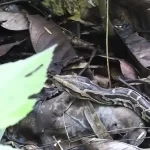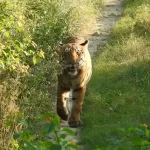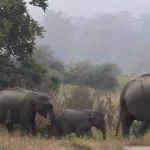Don’t Step on a Bee Day (10th July 2019)
Bees belong to family ‘Apidae’ that includes Honeybees belonging to genus ‘Apis‘. Honeybees are eusocial in nature exhibiting characteristics including highest level of social organization, cooperative brood care, colony consisting of overlapping generations of adults and division of labour into reproductive and non reproductive groups. Worldwide there are seven species of Honeybees including 44 subspecies. Honeybees perform a vital role in the pollination of the plants. Today most of the species of Honeybees are threatened due to the rampant use of fertilizers, pesticides and pesticides and due to destruction of their colonies for illegal collection of wild honey.
There are five species of Honeybees found in India including:-
-
Black Dwarf Honeybee Apis andreniformis,
-
Dwarf Honeybee Apis florae,
-
Giant Honeybee Apis dorsata,
-
Asiatic Honeybee Apis cerana
-
European honey beeApis mellifera.
Giant Honeybee, also known as Large Indian Honeybee or Rock Honeybee is one of the common species found in Corbett Tiger Reserve. It is a highly eusocial honeybee with a size of 17-20mm and prefers to make its colonies in exposed locations, high up from the ground. The species makes its colonies in preferred trees in large numbers and it is common to come across locations with several dozen colonies in one tree. It is present in the area from November till July.
This Silk Cotton Tree Bombax ceiba is located on the bank of river Dhela, on the southern periphery of Corbett Tiger Reserve, close to Jim’s Jungle Retreat and attracts a very large number of colonies of Giant Honeybees every year.




